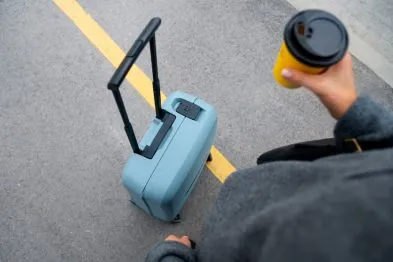Want to take your pet on a trip but not sure what documents or items are needed? To keep the journey stress-free for you, your pet, and other passengers, review the rules for transporting animals by bus in advance. Here are practical tips to help you prepare for trips across Ukraine or abroad.
Features of Transporting Animals by Bus in Ukraine
On domestic routes, simple but important rules apply:
- pets must travel in a carrier or cage of suitable size;
- dogs must wear a leash and muzzle;
- payment depends on the carrier – sometimes it’s free, sometimes treated as extra luggage;
- owners are responsible for cleanliness and pet behavior during the trip.
For family or group trips with pets, a convenient solution is bus rental with a driver. You can pick a vehicle with the right capacity and travel on your own schedule.
Rules for Transporting Animals on Intercity Buses
Intercity trips last longer than city routes, so requirements are stricter. The main rules for transporting animals on intercity buses include:
- one passenger can carry only one pet;
- the carrier must be informed about the animal when booking;
- a veterinary passport with vaccination records is mandatory;
- the carrier must be sturdy, well-ventilated, and have a solid bottom.
It’s also smart to bring water, a mat, or a toy – familiar items help reduce stress. With over 14 years of passenger transportation experience, we clarify these details during booking to make your trip smoother.

International Animal Transportation: Rules and Requirements
Taking a pet abroad requires more preparation than traveling within Ukraine. In addition to tickets and routes, you’ll need proper documents, vaccinations, and a suitable carrier.
Usually, for international animal transportation, you’ll need:
- an ISO-standard microchip (tattoos are rarely accepted, only if clearly legible);
- rabies vaccination given after chipping and documented;
- a European veterinary certificate issued by the state vet service (valid for 10 days);
- in some countries – a rabies antibody titer test from a certified lab;
- records of other vaccinations in the veterinary passport;
- confirmation of clinical health (sometimes checked at the border);
- a solid, ventilated carrier suitable for the pet’s size.
These are basic requirements, but each country may have its own specifics. For example, in Slovakia, they often request document translations into English or the local language. So before traveling, always check the latest rules of your destination country.
For popular destinations such as Poland, the most convenient option is to order bus rental for the Kyiv–Warsaw transfer. Our manager will assist from booking to return, helping with all arrangements.
Transporting Pets Abroad: What You Need to Know
Owners often ask if pets can travel on international buses. Yes, but only if the rules are followed.
If you’re planning pet transportation abroad, take these steps in advance:
- pass veterinary control in the country of departure;
- prepare passports and certificates for border checks;
- confirm the entry requirements of your destination (chip, vaccination, deadlines).
Besides documents, focus on comfort: a ventilated carrier, food and water supply, and a walk before departure to reduce stress.
Animal transportation is easier when you know the rules and choose a reliable carrier. We’ve worked on routes across Ukraine and Europe for years and understand all the transporting and border-crossing details. Travel with peace of mind and keep your pet comfortable – book your trip with us today.
FAQ
Can small animals be transported without a carrier?
No. Even the smallest pets must travel in a carrier. This is required for safety and passenger comfort.
What restrictions on breed or type of animal may apply?
Some carriers refuse aggressive dog breeds or exotic animals. We clarify such rules at the booking stage.
Is it necessary to notify the carrier about the animal in advance?
Yes. If you don’t, transportation may be refused.
What to do if the animal panics during the trip?
Bring a familiar toy or blanket. In some cases, a vet may recommend mild sedatives.
Can more than one animal be transported on a single ticket?
No. Each pet is treated as separate luggage and requires additional payment.



